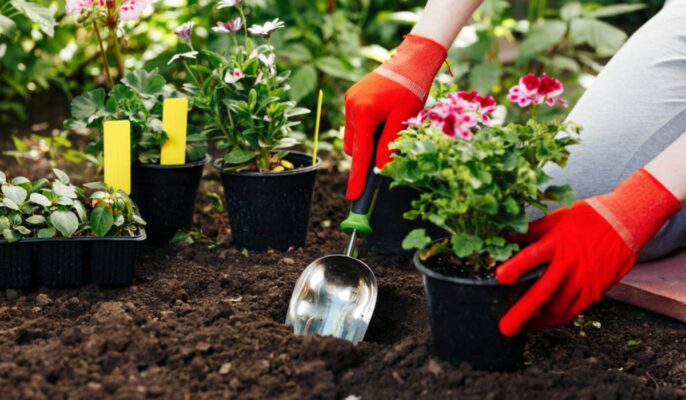Gardening is more than just a hobby; it’s a rewarding practice that brings us closer to nature, promotes well-being, and provides fresh produce or beautiful flowers. Whether you’re a seasoned gardener or a beginner, these gardening tips will help you cultivate a flourishing DIY projects.
1. Start with Healthy Soil
The foundation of any successful garden is healthy soil. Begin by testing your soil’s pH and nutrient levels. Most plants thrive in slightly acidic to neutral soil (pH 6-7). Amend your soil with organic matter, such as compost or well-rotted manure, to improve its structure, fertility, and water-holding capacity. This encourages strong root development and robust plant growth.
2. Choose the Right Plants
Selecting the right plants for your garden is crucial. Consider your region’s climate, soil type, and sunlight availability. Native plants are often a good choice because they are adapted to local conditions and require less maintenance. Group plants with similar needs together to ensure they receive the appropriate care and resources.
3. Plan Your Garden Layout
A well-planned garden layout can maximize space and ensure plants receive the necessary light and nutrients. Use the principles of companion planting to group plants that benefit each other. For example, planting basil near tomatoes can improve the flavor of the tomatoes and repel pests. Consider vertical gardening for small spaces, using trellises or hanging baskets to grow climbing plants.
4. Water Wisely
Watering is essential for plant health, but overwatering can be as detrimental as underwatering. Water your garden in the early morning or late evening to reduce evaporation and fungal growth. Use a soaker hose or drip irrigation system to deliver water directly to the roots, minimizing water waste and preventing leaf diseases. Mulching around plants helps retain soil moisture and reduces the need for frequent watering.
5. Practice Regular Maintenance
Regular garden maintenance is key to keeping your garden in top shape. Weed regularly to prevent competition for nutrients and water. Deadhead flowers to promote continuous blooming and prevent self-seeding. Prune shrubs and trees to encourage healthy growth and remove dead or diseased branches. Keep an eye out for pests and diseases, addressing them promptly with organic or chemical treatments as needed.
6. Fertilize Appropriately
Plants need nutrients to thrive, and even the best soil may require supplementation. Use organic fertilizers, such as compost, bone meal, or fish emulsion, to provide essential nutrients without harming the environment. Follow the recommended application rates to avoid over-fertilization, which can damage plants and leach into waterways.
7. Embrace Biodiversity
A diverse garden is a healthy garden. Include a variety of plants to attract beneficial insects, birds, and other wildlife. Predatory insects like ladybugs and lacewings can help control pests naturally. Pollinators such as bees and butterflies are essential for fruit and flower production. Create habitats like birdhouses, bat boxes, and small ponds to encourage biodiversity in your garden.
8. Use Sustainable Practices
Adopting sustainable gardening practices helps protect the environment and ensures the long-term health of your garden. Collect rainwater in barrels for irrigation. Recycle kitchen scraps and garden waste into compost. Reduce the use of chemical pesticides and herbicides, opting for natural alternatives instead. Practice crop rotation to maintain soil health and prevent pest build-up.
9. Extend Your Growing Season
Extend your gardening season with techniques like succession planting, which involves planting new crops as soon as one is harvested. Use cold frames, cloches, or row covers to protect plants from frost and extend the growing season into late fall or early spring. Choose plant varieties with different maturity dates to ensure a continuous harvest.
10. Enjoy the Process
Finally, remember that gardening is as much about the journey as it is about the results. Take time to enjoy the beauty and tranquility of your garden. Experiment with new plants and techniques, and don’t be afraid to make mistakes. Gardening is a learning process, and each season brings new opportunities for growth and discovery.
